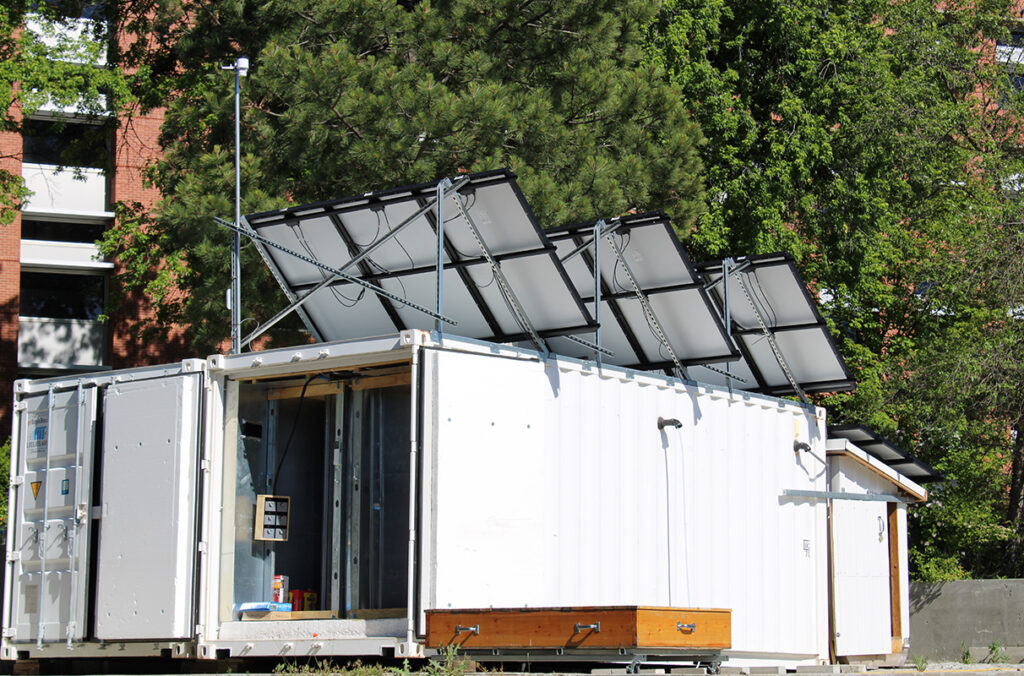Passive downdraft cooling system experiment
- PostedPublished 21 December 2023
Researchers at Washington State University (WSU) have devised a solar-powered test chamber with battery storage, enabling year-round validation of cooling systems in a controlled environment.

The facility maintains a consistent 51–54°C and allows for accurate measurement of temperature, humidity, and air velocity. Its calibration was conducted based on the results of a full-scale experiment on a passive downdraft building cooling system in Phoenix, Arizona, where hot and dry conditions prevail.
Buildings are responsible for approximately 60 per cent of the world’s electricity consumption, with around a fifth of that energy dedicated to cooling.
Energy generated to run air-conditioners around the world is estimated to emit 1950 million metric tonnes of carbon dioxide, or almost four per cent of all global greenhouse gas emissions.
In an effort to find a sustainable alternative, WSU researchers are using the test chamber to assess passive cooling systems, such as those incorporating wind towers and water evaporation to provide energy-independent cooling solutions.

Passive cooling systems like this have been used for thousands of years. Air is cooled as it passes over a moist layer at the tower’s top, causing evaporation. As a result, the cooled air becomes heavier and naturally sinks into the living space below, providing ventilation and cooling.
WSU School of Design and Construction assistant professor Omar Al-Hassawi said there was an opportunity to “innovate and use a mix of new and existing technologies to improve performance and the cooling capacity of these systems”.
“There might be inclusion of mechanical systems, but how can we cool buildings to begin with – before relying on the mechanical systems?”
The new test chamber enables researchers and builders to explore carbon-free cooling alternatives specifically designed for extreme temperatures.
“We can simulate extreme conditions,” said Professor Al-Hassawi. “Cooling is increasingly in demand in buildings, especially as the climate gets hotter.”
In the United States, nearly 90 per cent of residential homes and apartments currently depend on mechanical air-conditioning systems and it is expected that the demand for such systems will double by the year 2050. However, powering these units requires electricity, often generated by fossil fuels, which contributes to carbon dioxide emissions and global warming.
“How can we address building design, revive some of these more ancient strategies, and include them in contemporary building construction? The test chamber becomes a platform to do this,” said Professor Al-Hassawi.
“There’s a lot of new construction with the rising global population that is going to happen in the coming years, and a lot of it is going to be in the developing world.
“So if we build like we’ve been building and continue to rely on mechanical systems to meet cooling demands, that’s going to be an issue. There’s going to be a lot more air-conditioning that’s needed, especially with the population rise in the hotter regions of the world.”
Future studies in the test chamber will focus on developing multi-stage downdraft prototype cooling systems on a smaller scale, specifically through rapid prototyping and design iteration.
The aim is to address building design challenges and promote the use of these passive cooling systems in modern construction.
“With smaller-scale models, we can also do much quicker tests and get results sooner than having to wait on large-scale prototype construction,” said Professor Al-Hassawi.
- CategoriesIn SightGlass
- Tagspassive cooling, SightGlass News Issue 31

